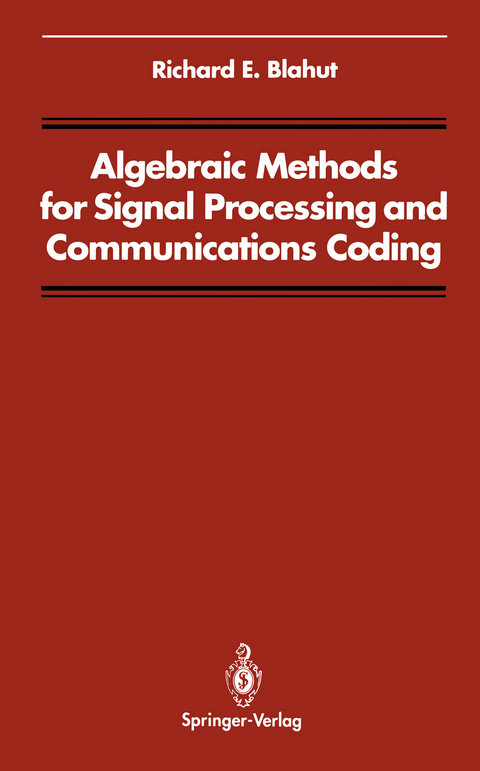
Algebraic Methods for Signal Processing and Communications Coding
Springer-Verlag New York Inc.
978-1-4612-7687-6 (ISBN)
1 Introduction.- 1.1 Digital Signal Processing.- 1.2 Digital Communications.- 2 Mathematical Fundamentals.- 2.1 Algebraic Fields.- 2.2 Elementary Number Theory.- 2.3 Extension Fields.- 2.4 Rings and Groups.- 2.5 Algebraic Integers.- 3 Sequences and Spectra.- 3.1 Weight and Complexity.- 3.2 The Fourier Transform.- 3.3 Examples of Fourier Transforms.- 3.4 Properties of the Fourier Transform.- 3.5 Decimation of Shift Register Sequences.- 3.6 A Universal Eigenvector.- 3.7 Bounds on the Weight of Sequences.- 3.8 The Gleason-Prange Theorem.- 4 Cyclic Codes and Related Codes.- 4.1 Theory of Reed-Solomon Codes.- 4.2 Reed-Solomon Codes in Infinite Fields.- 4.3 Reed-Solomon Codes in Finite Fields.- 4.4 Radix-2 Reed-Solomon Codes.- 4.5 Conjugaey Constraints and BCH Codes.- 5 Fast Algorithms for Convolution.- 5.1 Convolution by Blocks.- 5.2 Fast Algorithms for Cyclic Convolution.- 5.3 Convolution of Integer Sequences.- 5.4 Convolutions Using Residue Number Systems.- 5.5 Convolution of Polynomial Sequences.- 6 Solving Toeplitz Systems.- 6.1 The Sugiyama Algorithm.- 6.2 The Berlekamp-Massey Algorithm.- 6.3 Relationships Between Algorithms.- 6.4 The Levinson and Durbin Algorithms.- 7 Fast Algorithms for the Fourier Transform.- 7.1 The Cooley-Tukey FFT.- 7.2 Radix-2 Transforms.- 7.3 The Good-Thomas FFT.- 7.4 FFT Algorithms for Subblocks.- 7.5 FFT Algorithms Using Algebraic Integers.- 7.6 The Winograd FFT.- 8 Decoding of Cyclic Codes.- 8.1 Decoding of Reed-Solomon Codes.- 8.2 Erasures and Errors Decoding.- 8.3 Time Domain Decoder Algorithms.- 8.4 A Universal Decoder Architecture.- References.
| Reihe/Serie | Signal Processing and Digital Filtering |
|---|---|
| Mitarbeit |
Stellvertretende Herausgeber: C.S. Burrus |
| Zusatzinfo | X, 143 p. |
| Verlagsort | New York, NY |
| Sprache | englisch |
| Maße | 155 x 235 mm |
| Themenwelt | Technik ► Elektrotechnik / Energietechnik |
| Technik ► Nachrichtentechnik | |
| ISBN-10 | 1-4612-7687-X / 146127687X |
| ISBN-13 | 978-1-4612-7687-6 / 9781461276876 |
| Zustand | Neuware |
| Haben Sie eine Frage zum Produkt? |
aus dem Bereich


